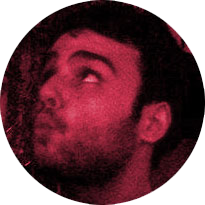How to create a quality map for metro
The authors of Hollow Knight talk about the process of building a complex interconnected world from the outline to the finished game.

There is something surprisingly pleasant in the study of complex 2D spaces of games made on the model of Metroid and Castlevania. This feeling is impossible to get in other games: a clear understanding of how parts of the world fit together, the ability to recognize the presence of a hidden room, the satisfaction of getting new abilities, allowing you to get to previously unattainable heights. A quality metro map makes the player want to master every square centimeter and remains interesting even when he follows the same route for the second, tenth and twentieth time.
So how do you create a map for metro? How to create an interconnected world, go back in which it is interesting, which gives the player the freedom to research, but at the same time partially retains the path of its development? Is there a secret formula, secret knowledge? I asked these questions to the creators of Hollow Knight , Metroid-inspired fantastic adventure in the entourage of the decaying Hallownest kingdom, which reminds me of Don Bluth's animated film “The Secret of the NIMH” (only insects instead of rats).
')
We talked about what is important for such a game, and why the authors themselves never mention the term “metro”. Then we got to the most interesting: we looked at the sketches, diagrams and working designs of the Hollow Knight world, from the very beginning to the final version.
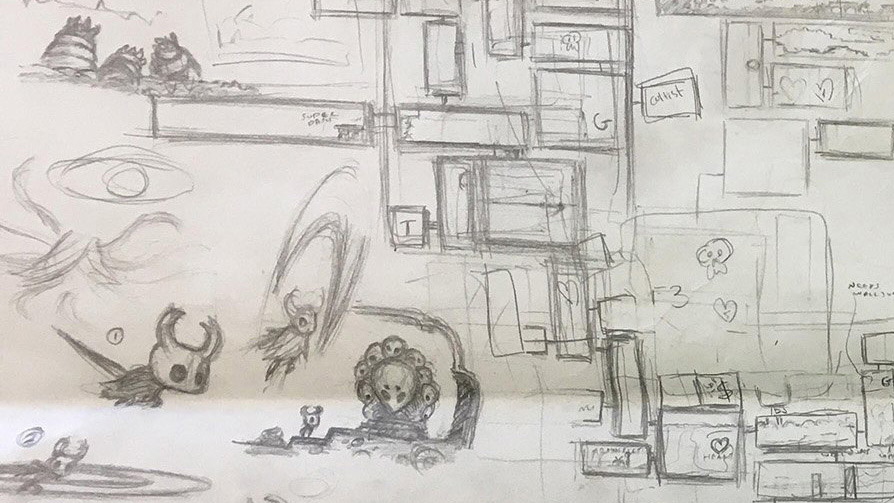
Sketches of Hollow Knight characters by Ari Gibson before starting work on the design of maps.
Origins of the Hollow Knight Card
William Pellen: Pellen developed most of the enemies from Hollow Knight and created many interactive elements of the world.
Ari Gibson, animator and co-director of Team Cherry: [Hollow Knight] evolved from a project with a game jam, in which she had the simplest look. I do not think that when creating, we discussed a lot of genres, or consciously thought about the difference between Metroid and Castlevania.
Ari Gibson: Gibson used to have his own animation studio. He drew Hollow Knight graphics by hand, and also worked on design with Pellen.
William Pellen, Team Cherry designer and co-director: sometimes in the process of working on the game, when other similar games appeared, indie games, we heard: “oh my God, another metro test, why do they continue to produce?” And you think: “this it means only that there is a big interconnected world in the game. ” We were very afraid to describe the game itself, with marketing and everything like metro.
Gibson: There is another aspect to this: will you allow the genre to dictate solutions for your own game? Do you make an informed decision that you are going to create a metro, and do you build on this the conditions of the game? I don't think we ever did something like that. We just told each other that we were going to make an adventure in this big world and create an interesting world with lots of places and objects to explore, hoping people would like it.
Pellen: one of the first with which we decided - the scheme of common development. All features of the character and the approximate order of their receipt. At the same time, we talked about the basic structure of the world. In the beginning, everything was simple: "here is the configuration of the world, the characters will receive their strength in this particular order, this is the way they will travel to get their abilities." After that, in the process of expanding the game, we began, for example, to change the linear development of the character and divided it into parts.
Gibson: made it less linear, yes. We got rid of most of the clear barriers in the game, and as a result, many of the obtained abilities turned out to be optional. And now people go through the game speedran and almost do not collect these abilities. That is what we hoped for.

Most of the enemies and rooms that appeared in Hollow Knight began their lives with paper.
Pellen: One of the earliest ideas was a city in the upper middle of the world. It is called the Forgotten Crossroads because it is in the middle, it is the intersection of the whole world. Then there was a mushroom area on the left, a desert on the right, and below it was the City of Tears. This structure, albeit rather vaguely, can be seen in the finished game. In the beginning, we thought that the player would reach the intersections, then in each of the three areas there would be one of the bosses, and this is the same boss, with a slightly changed appearance.
Gibson: These are the three Dreamers the player kills. That is, in fact, they were one boss. Their masks are alike, but their bodies are different. After defeating each of them in each area, the player had to go back to the beginning and fight the final boss. You may notice that this structure is almost the same as that of the [finished] game, but strongly mixed, and all Dreamers are now in other places. But the player will still go and fight them, go back to the beginning and fight the final boss.

In the early Hollow Knight concept, random generation was to be used to connect rooms. But this idea was abandoned.
Pellen: [In the original game jam version] the idea was that we would make the rooms' arrangements and their arrangement would change so that the interior design was not too random. It was supposed to be like a small metro, the passage of which would take an hour or two, but at the same time the arrangement of the rooms could be changed so that the player could get abilities in a different order, and so on.
First there were sections, see white lines along the black contour? These were possible exits and all that, so the schemes could vary in different ways. S1, S2, S3 are secrets 1, 2, 3. In each of them there could be food, or nothing, or a chest.
Gibson : it was a real headache. And the game was completely uninteresting.
Pellen: [Laughs] Yes, she annoyed me. It was not interesting from the point of view of the plot, nor from the technical side, nor by design. When we today reflect on the strengths of the Hollow Knight, then one aspect in which we invested a lot of effort was the logical arrangement of rooms and things in the world.
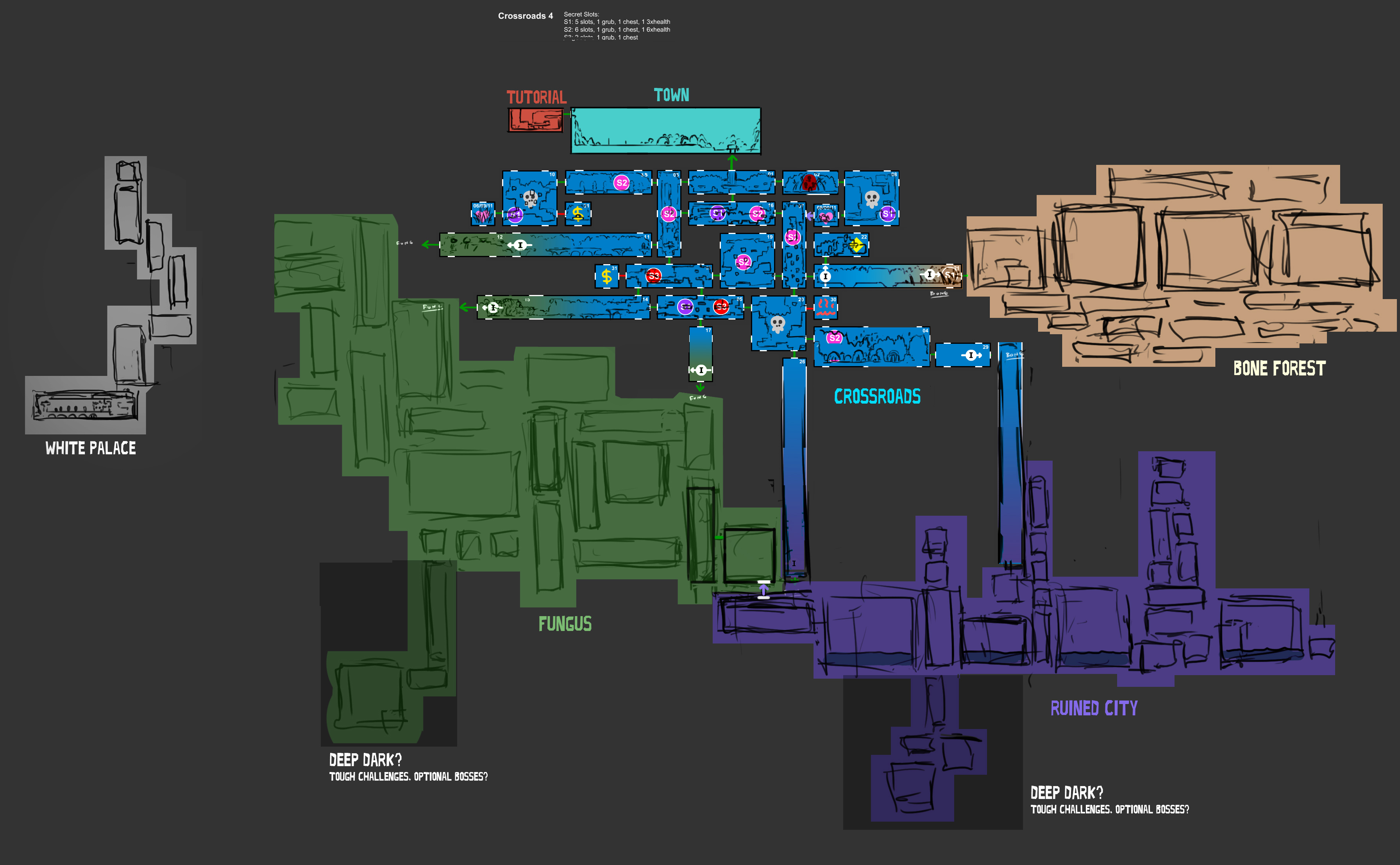
Rejecting procedural generation, Team Cherry broke the world into four areas with Crossroads in the middle. And on this basis, the map began to grow.
Pellen: and we again return to the Crossroads area, already at the stage of the formed idea. You still see vague versions of what turns into Greenpath, what turns into Fungal Wastes. At the first stage, you need to decide where they will be located in the big world.
We have created Crossroads as the basis of everything around which the rest of the world has evolved. Then we made this area with mushrooms, threw a rough path through it with several side rooms. After we made the basic scheme of movement through the region (and this is the work of Ari), he began to make sketches of the internal parts.
How the card took its shape
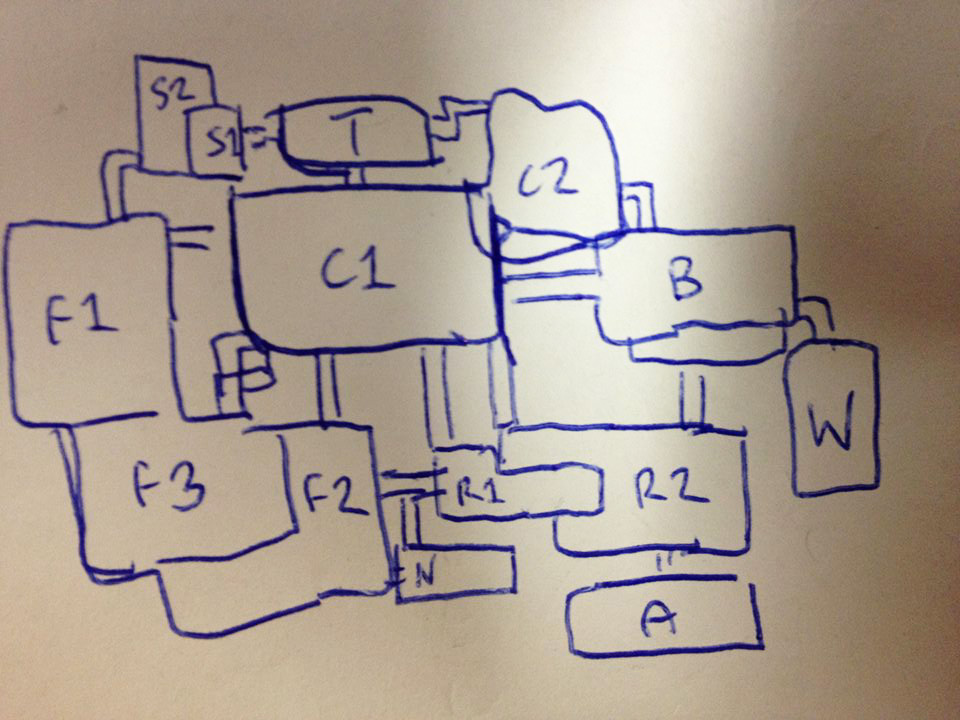
The numbers on the outline indicate the planned linear path through each area. Team Cherry has gradually smoothed this critical path.
Pellen: For some time the game had such a structure. Before we moved to Unity, the game was developed in the Stencyl program for the first five or six months, it is similar to the smaller version of Game Maker. We have already built the whole world out of tiles. One could actually run over it, albeit in the black block mode.
We spent the main way through these areas, the player had to come from the city, visit intersections, then go to the mushrooms, get the ability, go to the big city, get the ability, go to the forest of bones, get the ability, then go back and visit the big city 2, then come back and visit the mushroom area again, and on this the game ended, he came back and fought with the last boss.
Many of these areas became separate areas. C2 was at first something like “oh, it would probably be interesting to go back and re-enter the intersection area, right?” But how to make it thematically different? What will it look like if we add mines to this area? As a result, it separated and became a completely new area called Crystal Peak. Initially, it was Crystal Mines.
Ari began to think about how to make these areas different. This Fungus 1 has become a Greenpath. Fungus 2 has become the most Fungal Wastes. Fungus 3 evolved into Fog Canyon and Queen's Gardens. So we started with this, and slightly modified the scheme. Over time, Bone Forest appeared, I remember how Ari said that he did not like a lava area that was not in the bottom of the world.
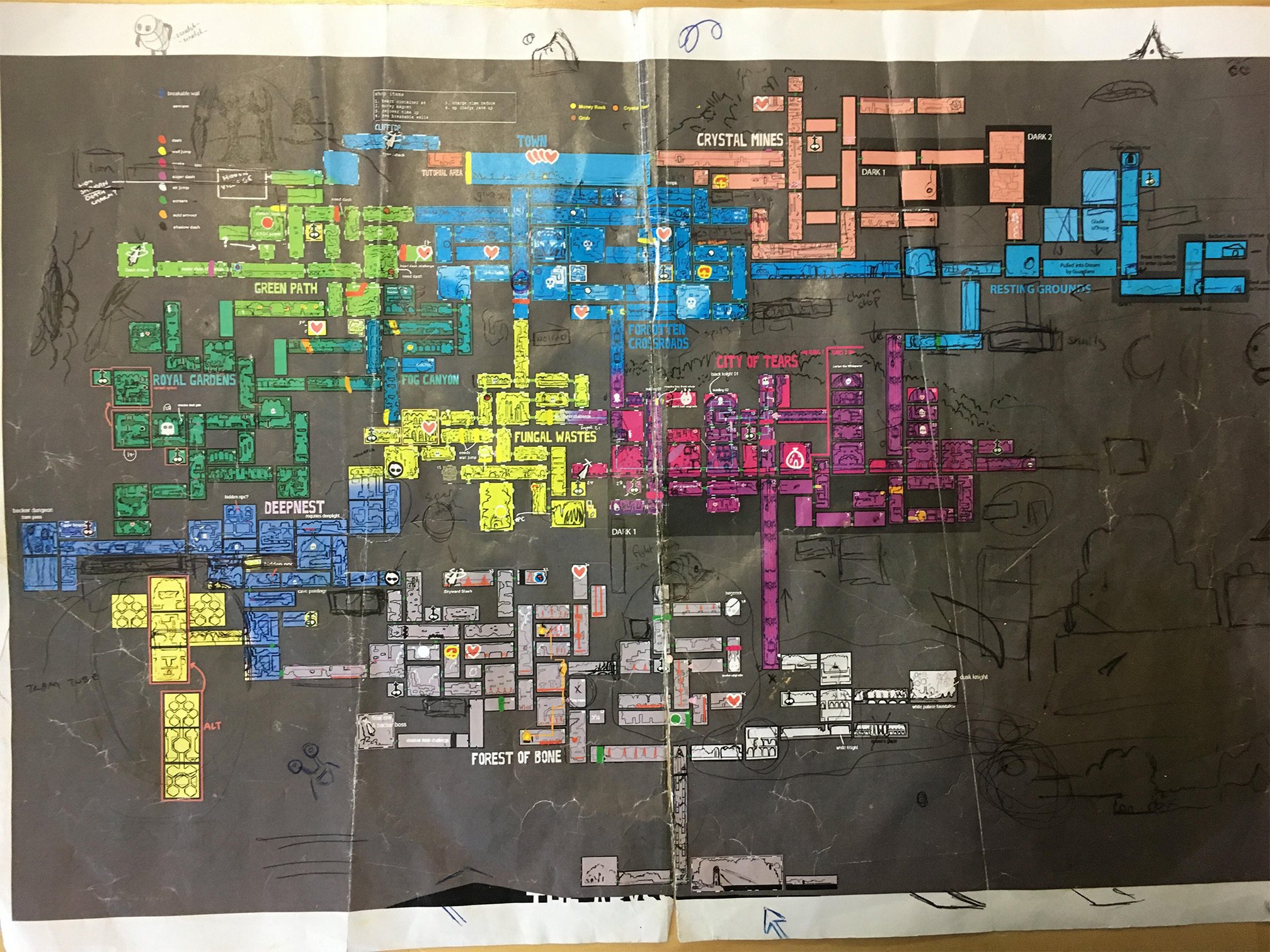
Hallownest much later. Huge Bone Forest moved to the bottom of the map. It was later cut out.
Gibson: Ultimately, the forest of bones did not become a component of the game.
Pellen: these are the areas we talked about: Greenpath, Fog Canyon, you see how they took their form. They exist. Bone Forest was quite far away, and you can see its entire structure. Here lies a double jump, and in the final game he is in a completely new area. It is evident that it is connected with everything else.
So in the next step, we completely cut Bone Forest from the right side of the world and put it down. But we needed another area connected to Bone Forest, and we discussed one idea, which became a combination of ideas. It was a dangerous area full of predators, compact aggressive rooms. And we talked about the subject-lamp, so we wanted to create a dark area. And I think that Ari wanted to make an area with spiders, which is quite logical. Therefore, we have combined these ideas. And the tram, it all came together in Deepnest.
Gibson: The Bone Forest area, which was quite large, was removed mostly because it grew too large. Not only because we wanted to be on time, but also because the game was already too tiring for some players. This is a major expansion, and the players need to keep a lot of information in mind. Probably another very large area would be very annoying to people in terms of information held in volume.
Pellen: It was the largest area. She already existed. There were no enemies in it, but one could run over it and look at the lava and bone structures. But we decided to remove it. In a sense, it was replaced by a pair of smaller areas. We cut the lower parts of Deepnest and expanded them, simply because we had to. And then they added Ancient Basin.
Then we needed to place in the game some elements, for example, Hive and the second battle with the Hornet, other fragments. And so Kingdom's Edge appeared. This was the last added area, and most of it was needed just to balance the card. Kingdom's Edge has become a kind of generalization. For a while, he was called Outskirts. Everything that could not be built into the rest of the map was transferred there. And then we created our own individuality around it. This is actually a rather interesting area.
Gibson: the only area that, in my opinion, is needed only for reasons of narrative is Blue Lake, located above a rainy city. It is there only because the city is constantly raining, and I could not accept the fact that we can not explain where it comes from. Therefore, we have located above the city a large lake.
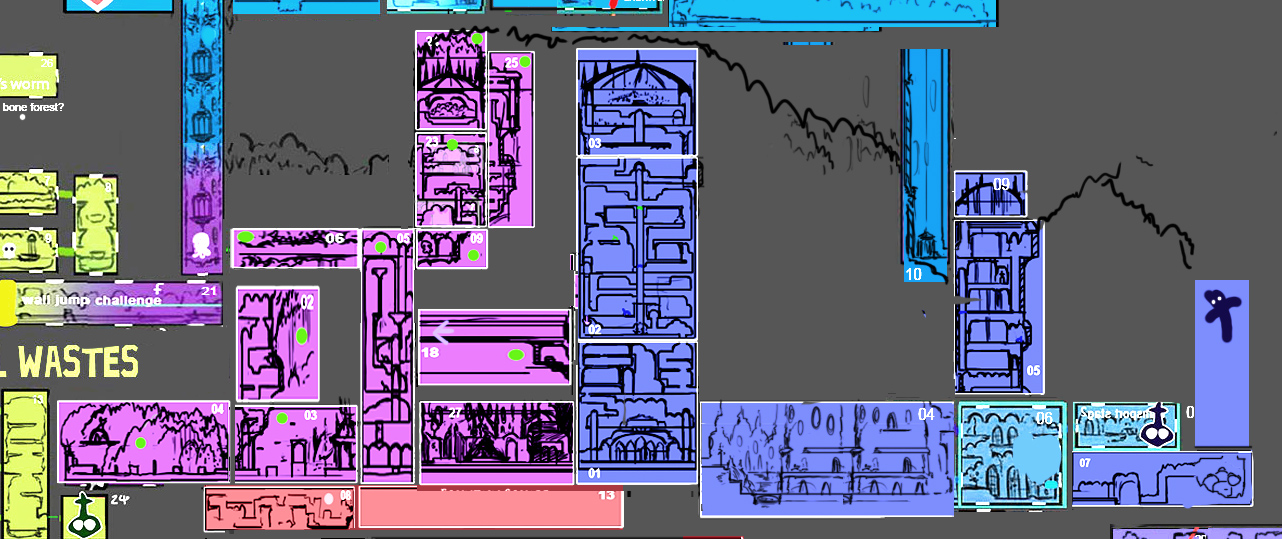
Larger view of the room layout. Outlines of ideas give an idea of the placement of platforms and obstacles.
Gibson: This is a slightly abstract scheme of what will appear in the room as a result. The next step is to create the rooms themselves from the tiles and connect them. The whole world consists of black tiles 64x64 pixels in size. They are very easy to draw, and after that you can start the game and carefully test the location, achieving the right effect. And it very quickly turned into a fairly large amount of work.
Pellen: we call this process building a room out of blocks. This is where we started. Then you can jump on the rooms, checking whether the platform is logical. Usually, the next step for each room was Ari, he “dressed” the entire room, added design and objects there, after which I or Ari, depending on who made this area, placed enemies and interactive elements. Put up opponents, geo stones, switches and everything you need.
Turn the map into the world
Gibson: Everything was honest at 98 percent. There were just a few tricks ... for example, a small room going down, say another 20 tiles, and something like that. There has never been a case where the whole room was a paradox.
Pellen: we wanted the players to move around the world and were in real space, it could not be that you open the door in one place and find yourself completely different, it does not make sense, and players will not be able to draw a map in their head. One of our goals was to create as many connections as possible between the areas.
Gibson: obviously, it helped to come back when people explore the whole world. Very annoying when you are at a point located two centimeters from the place you need, and you cannot get there.
Pellen: it is very practical. And the players played like us, they found connections between the parts, they learned how the regions transform into each other, and this in itself turned out to be a good reward.
Gibson: This is interesting. Many solutions, many sizes and rooms chosen by us, should have created a sense of exploration. Research and discovery. Discoveries for us mean not only finding 500 flags or 500 coins. This means finding unique places, unique characters and systems, for example, a new shopkeeper, offering something new in the world that you have never seen before.
The structure was largely set on the basis of this goal. If we had a big lake, there was an understanding of where it should lead, because we thought of it as a world, not an abstract game. Therefore, it was possible to create routes corresponding to what we are talking about, and as a result an interesting, believable space was obtained.
Pellen: sometimes integrity is difficult to maintain, but often the game itself makes decisions for you, in a natural and logical way.

The world of Hollow Knight, as it exists in the finished game.
Gibson: [mapping] was not really an analytical process.
Pellen: he was mostly intuitive. We have never done anything like this before, and I didn’t know if the developers treat it as a mathematical process. Even something simple. for example, laying out a small room from tiles - how many iterations can it take? X tiles - the optimal size, and so on. But we didn’t do anything. Ari has already talked about this. We started with the idea of the world, and it became the first, and not the analytical thinking “what the path should be”. We began to connect parts of the world as we thought it was interesting and logical, and on this basis we continued to work.
Gibson: there is another approach to this problem, and it is perfectly acceptable. Our goal was to create the world, and since it is a world, and it is complete, the player can easily get lost. He can go a completely different way, take another improvement, and this is quite normal. But nowadays, very often they create something similar to a “roller coaster” rail gameplay in which developers push players to the route. Even inside the games in the style of "metro", this approach is often found, the game tends to give the player a clearer goal.
Pellen: the world is built around this path, and not vice versa. And this, by the way, is quite normal and well suited for many aspects.
Gibson: if you played Guacamelee, then this game is a good example of this approach. It is more like a route, a direct road through the gameplay. And this is an excellent, highly polished gameplay throughout its entire length.
Pellen: it gives the player a much clearer gameplay. This means that when developing, it is easier for the authors to understand where the player will be at a particular moment and what will be available to him. The game becomes smoother.
Our game asks players for trust: she says that if they get lost, they will find their way sooner or later. And it will be worth it, even when you get lost, you will come across something interesting. You do not have to wander through the same caves for an hour, finding nothing but dead ends and the same enemies. We understood that people will spend a lot of time in the world, will return through it, so we tried to add a lot of small secrets and details. We wanted to create a large variety of enemies, so even if you just look at the world and do not go through the plot, you can stumble upon a room that was previously missed, which will have a strange fat enemy who was not anywhere else. And stuff like that.
We put everything together
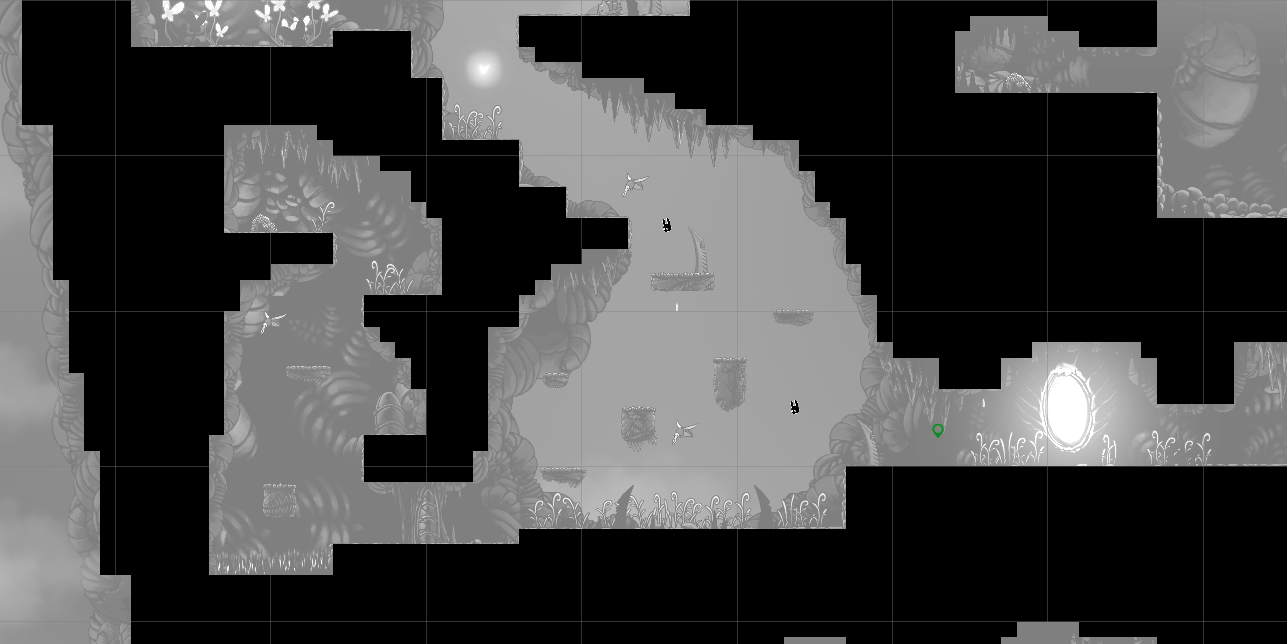
A black tile room showing the basic geometry before the graphics are located.
Gibson: initially we saw only a bunch of tiles. But towards the end we continued to complement the game with graphics, gameplay, sounds and music, and all these small details. Over time, it began to feel like the world, and it gave great satisfaction. We go through the game 100 times, but at the beginning it consists only of blocks, and at the end it is already a real space.
If you like being in this space, if you make the players enjoy this world, then you are halfway to victory. You can make mistakes in some tiles or something else, but it will not bother anyone, because you have convinced people that they should be in this world. We were only interested in convincing people to stay in the world.
Pellen: I repeat, we have never created anything like this before. We first discussed: do we need to create tiles for everything, then add enemies and do another iteration until we achieve perfect gameplay, and then decorate the game? But we did not have time for this.
Gibson: according to my recollection, it took two days to create world tiles by sketching, then another four days on the schedule, and then we reached the level at which 85-90% was ready. If we went the other way, the game would not exist. The game would come out in three more years.
Pellen: I dealt with interactive elements and all that. At some stage, I spent a month creating each enemy in the game, all in one block. Then, when my “palette” was ready, I walked through each area. How much did it take a week? Perhaps less. I set all the enemies, switches, bridges.

Unity's “palette” of freehand drawn Ari resources.
Gibson: you just have to trust yourself. We, like you, have played hundreds and thousands of games for decades. We have developed a taste and intuition. At least, in the time frame that we had, you should trust your intuition: if something seems to be right, then most likely everything will be fine. Fortunately, it seems so.
Pellen: mostly yes. Then we made some small improvements: lower this platform to one tile, this enemy needs more space, cut out a part of the ceiling for it here. But it took a little time.
One of the most important principles - do not complicate. If you think about the character of the player, about everything that you encounter during the game, then this is a fairly standard set of fairly simple steps. All enemies, although some of them are quite clever, but the schemes for their creation were simple, and the world itself has a certain simplicity. [This] allowed us to deal with different aspects separately and not really worry about the fact that they do not fit together. We were able to create separate parts of the game, enemies, bosses, peace, improvements, and since they all had the same simplicity and were related, when it was time to unite them, nothing contributed to the dissonance.
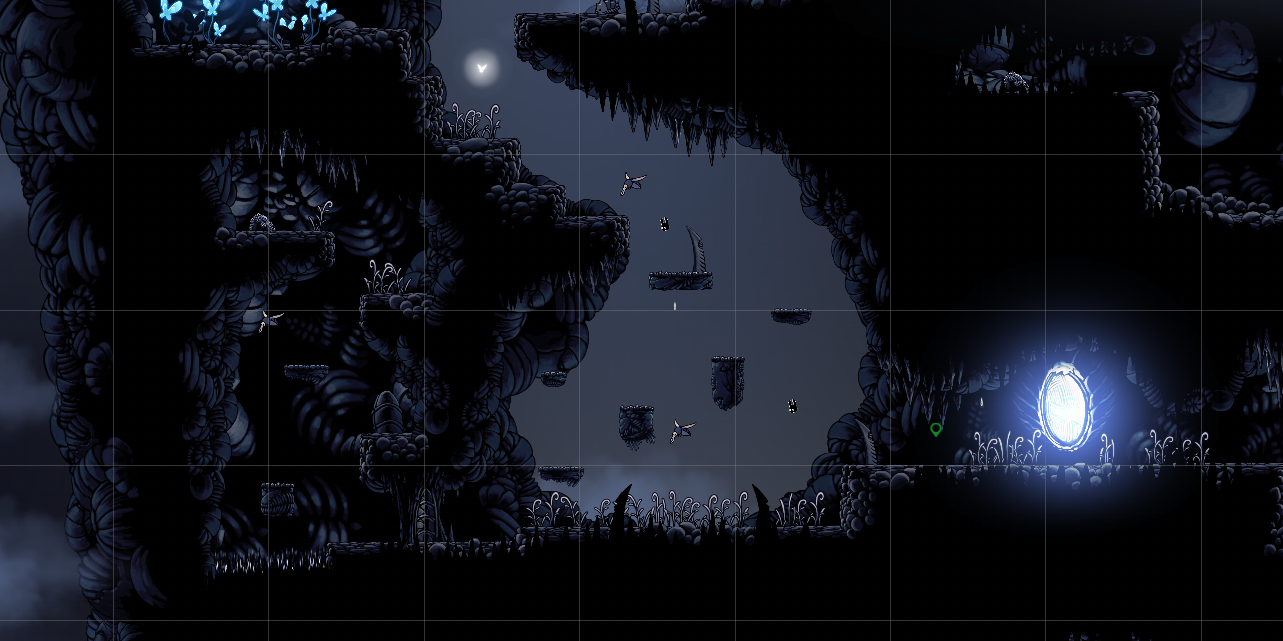
Room after "dressing."
Gibson: in two years of creating the game, we learned about small passes and cuts, which turned out unintentionally, but we deliberately left them, even when we found them. This is amazing. It is very interesting to make such small discoveries.
Pellen: we were of the opinion that such trifles should not be removed if this is not necessary. There are flying enemies in the game, we added them intentionally, you can jump away from them and jump over parts of the world. At the beginning of Greenpath there is a place with a mosquito, which we added to the room on purpose. If you hold it to a certain point and jump away from it, then you can skip the bottom of the map.
Gibson: 0.1 percent of the players succeed, but they feel they have made an interesting discovery.
Pellen: when you pave your own way and find new ways of dealing with the elements of the world, the game feels like your own adventure, your own story. This adds to the story of individuality. Players like to invest in such little things. If they get to the area earlier than planned, because they managed to grab onto the wall while they are swimming, for example, and as a result find themselves in a completely new area, then their study of this area is done with a completely different attitude, because they are not sure whether they were to be here.
Gibson: behind the scenes, all this is not at all difficult. Work is to create heaps of simple things.
Pellen: Yes, and then you put them all together.
Source: https://habr.com/ru/post/339554/
All Articles
